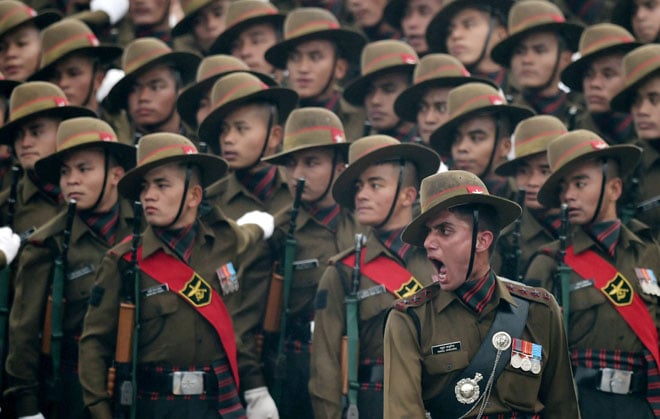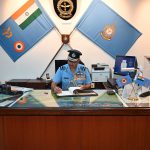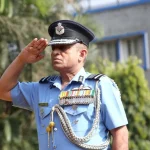The Indian Army’s infantry regiments have long been the backbone of the nation’s armed forces, renowned for their unwavering bravery, rich heritage, and unparalleled combat prowess. These elite units, each with its distinct history, culture, and specialization, have etched their names in the annals of military history, emerging as true powerhouses that have spearheaded numerous victories both within and beyond India’s borders.
The Enduring Legacy of Infantry Regiments
The Indian Army’s infantry regiments trace their origins to the early days of the British Indian Army, with some tracing their lineage back to the 18th century. These regiments have been at the forefront of the nation’s defense, participating in a myriad of conflicts, operations, and maneuvers that have cemented their reputation as the backbone of the Indian military.
The organizational structure of the infantry regiments has evolved over time, with the number of regiments fluctuating due to various organizational changes and restructuring efforts. However, the core essence of these units – their unwavering commitment to duty, their unparalleled combat skills, and their deep-rooted esprit de corps – has remained steadfast.
List of Infantry Regiments in the Indian Army
There are 27 Infantry Regiments in the Indian Army. Details are as follows:
| S.No. | Regiment | Year of Raising |
| 1. | PARA | 1761 |
| 2. | PUNJAB | 1705 |
| 3. | MADRAS | 1758 |
| 4. | GRENADIERS | 1796 |
| 5. | MARATHA LI | 1768 |
| 6. | RAJ RIF | 1817 |
| 7. | RAJPUT | 1798 |
| 8. | JAT | 1817 |
| 9. | SIKH | 1846 |
| 10. | SIKH LI | 1941 |
| 11. | DOGRA | 1858 |
| 12. | GARH RIF | 1901 |
| 13. | KUMAON | 1730 |
| 14. | ASSAM | 1941 |
| 15. | BIHAR | 1941 |
| 16. | MAHAR | 1941 |
| 17. | JAK RIF | 1837 |
| 18. | JAK LI | 1948 |
| 19. | 1 GR | 1815 |
| 20. | 4 GR | 1857 |
| 21. | 3 GR | 1815 |
| 22. | 9 GR | 1817 |
| 23. | 5 GR | 1858 |
| 24. | 8 GR | 1836 |
| 25. | 11 GR | 1948 |
| 26. | LADAKH SCOUTS | 1837 |
| 27. | NAGA | 1730 |
Specialization and Diversity within the Infantry Regiments
The Indian Army’s infantry regiments are diverse in their specialization and composition, catering to the unique geographical, cultural, and operational requirements of the nation. From the highly specialized Ladakh Scouts, tasked with securing the treacherous Himalayan borders, to the renowned Gorkha Rifles, renowned for their ferocity in battle, each regiment brings a distinct set of capabilities to the table.
The Mechanized Infantry Regiment, for instance, combines the mobility and firepower of armored formations with the adaptability and versatility of traditional infantry units, while the Parachute Regiment stands as the elite airborne force, capable of rapid deployment and specialized operations. The Sikh Regiment, on the other hand, has earned a reputation as the most decorated unit in the Indian Army, with a storied history of valor and sacrifice.
Regimental Traditions and Esprit de Corps
One of the defining features of the Indian Army’s infantry regiments is their strong regimental traditions and unwavering esprit de corps. Each regiment boasts its unique insignia, battle honors, and ceremonial practices, which serve to foster a deep sense of camaraderie and unit cohesion among its members.
The regimental system, which has been a cornerstone of the Indian Army’s organizational structure, plays a crucial role in instilling a strong sense of identity and belonging among the soldiers. This, in turn, translates into a heightened morale, discipline, and combat effectiveness, as the soldiers are driven by a shared sense of purpose and a deep-rooted loyalty to their regiment.
The Storied Histories of Iconic Regiments
The Indian Army’s infantry regiments have a rich tapestry of histories, each with its own set of legendary exploits and distinguished battle honors. The Madras Regiment, for instance, traces its origins to the 1750s, making it the oldest infantry regiment in the Indian Army. The Punjab Regiment, on the other hand, is the second-oldest unit still in active service, having been formed in 1947 from the erstwhile 2nd Punjab Regiment of the British Indian Army.
The Maratha Light Infantry, with its roots dating back to 1768, is the oldest light infantry regiment in the Indian Army, while the Rajputana Rifles, the second-oldest rifle regiment, was formed by the amalgamation of six previously existing regiments. The Sikh Regiment, with its unparalleled record of gallantry and sacrifice, stands as a testament to the unwavering spirit and martial prowess of the Sikh community.
Adapting to Modern Warfare Challenges
As the nature of warfare evolves, the Indian Army’s infantry regiments have demonstrated their ability to adapt and innovate, ensuring their continued relevance and effectiveness on the modern battlefield. The Mechanized Infantry Regiment, for instance, has seamlessly integrated armored capabilities into its traditional infantry roles, enhancing mobility and firepower.
Similarly, the Parachute Regiment has expanded its operational scope, incorporating specialized training and equipment to tackle emerging challenges, such as counter-insurgency operations and urban warfare. The integration of advanced technologies, including networked communication systems and precision-guided munitions, has further bolstered the capabilities of these elite units.
Gurkha Regiments: A Unique Legacy
A unique and integral part of the Indian Army’s infantry regiments are the Gurkha units, which trace their origins to the British Indian Army. After the partition of India in 1947, four of the ten Gurkha regiments were transferred to the British Army, while the remaining six became part of the newly formed Indian Army.
The Gurkha regiments, renowned for their ferocity in battle and their unwavering loyalty, have earned a formidable reputation, both within the Indian Army and on the global stage. Their distinctive kukri knives, their disciplined training, and their indomitable spirit have made them a force to be reckoned with, playing a crucial role in numerous conflicts and operations.
Regimental Honors and Gallantry Awards
The Indian Army’s infantry regiments have been the recipients of numerous honors and gallantry awards, reflecting the exceptional courage and sacrifice of their personnel. The Sikh Regiment, for instance, is the most decorated unit in the Indian Army, with a staggering 245 pre-independence and 82 post-independence gallantry decorations to its name.
The Parachute Regiment, too, has earned a reputation for its bravery, with several of its units and individual soldiers being recognized for their valor in the face of adversity. The Punjab Regiment, with its long and distinguished history, has also been the recipient of numerous battle honors and unit citations, cementing its status as one of the most illustrious regiments in the Indian Army.
The Regimental System: A Unifying Force
The regimental system, which lies at the heart of the Indian Army’s organizational structure, has played a pivotal role in fostering a strong sense of unity, camaraderie, and esprit de corps among the soldiers. This system, which groups soldiers into distinct units based on their geographical, cultural, or religious affiliations, has been instrumental in cultivating a deep-rooted loyalty and a shared sense of purpose.
The continuity and legacy of the regimental system have been crucial in maintaining the morale and combat effectiveness of the Indian Army. The soldiers, bound by the traditions and values of their respective regiments, are driven by a strong sense of pride and a commitment to upholding the honor and legacy of their unit.
The Guardians of India’s Borders
The Indian Army’s infantry regiments have been the stalwart guardians of the nation’s borders, securing the country’s territorial integrity and safeguarding its citizens against external threats. From the treacherous Himalayan terrain of the northern borders to the arid deserts of the west, these elite units have consistently demonstrated their ability to adapt to diverse operational environments and overcome formidable challenges.
The Ladakh Scouts, for instance, have been instrumental in securing the nation’s strategic high-altitude borders, while the Arunachal Scouts have played a crucial role in defending the northeastern frontiers. The Jammu and Kashmir Light Infantry and the Jammu and Kashmir Rifles, on the other hand, have been at the forefront of the army’s counter-insurgency operations in the volatile region of Jammu and Kashmir.
The Future of Infantry Regiments
As the Indian Army continues to evolve and adapt to the changing landscape of modern warfare, the role and significance of its infantry regiments remain paramount. These elite units, with their rich heritage, specialized capabilities, and unwavering commitment to duty, will undoubtedly continue to be the backbone of the nation’s armed forces, ready to meet any challenge that may arise.
The integration of advanced technologies, the incorporation of specialized training, and the continuous modernization of equipment and tactics will ensure that the Indian Army’s infantry regiments remain at the forefront of the nation’s defense. As the country’s strategic priorities and operational requirements evolve, these storied regiments will undoubtedly continue to play a pivotal role in safeguarding India’s sovereignty and territorial integrity.
Conclusion
The Indian Army’s infantry regiments stand as the embodiment of the nation’s military might, their legacy etched in the annals of history through a tapestry of heroic exploits, distinguished battle honors, and unwavering devotion to duty. From the snow-capped peaks of the Himalayas to the scorching deserts of the west, these elite units have consistently proven their mettle, serving as the vanguard of the Indian Army’s efforts to safeguard the country’s sovereignty and territorial integrity.
As the Indian Army continues to adapt and evolve to meet the challenges of the modern era, the role and significance of its infantry regiments will undoubtedly remain steadfast. These storied units, each with its unique history, culture, and specialization, will undoubtedly continue to be the pillars upon which the nation’s defense rests, ready to answer the call of duty and uphold the proud legacy of the Indian Army.
Budget allocation in the Army is not carried out Regiment wise. As per Government policy on the subject, all citizens irrespective of their class, creed, region or religion are eligible for recruitment in the Indian Army. After Independence, it has been the policy of the Government not to raise any new Regiment for a particular class/community/religion or region. Adequate vacancies are being provided to all classes to ensure equitable opportunity for recruitment into the Army.

Many Petitions, VIP references, Parliament questions, Private Member Bills etc for raising of new regiments based on Class/Region/Names of Historical and National Heroes etc have been received from time to time. However, as per Government Policy quoted above, no new regiment has been raised. One of the War Cries of BIHAR Regiment is “BIRSA MUNDA KI JAI”. Indian Army has numerous Regiments across various Arms & Services. They have been constituted in different years and have different slogans.













